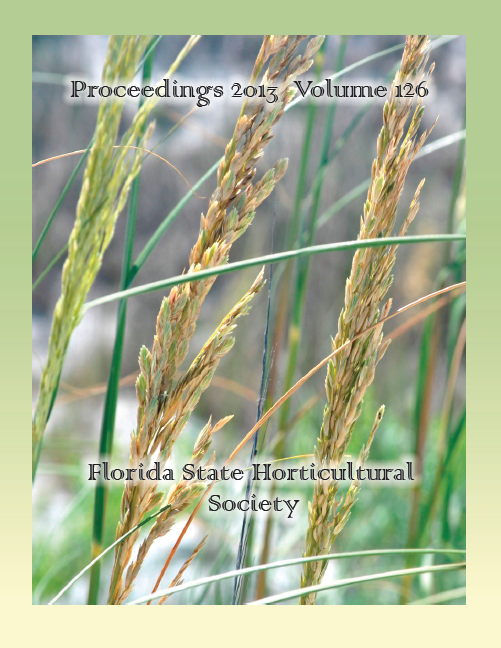Abstract
Mangifera casturiis one of about 31 species of mango that can be found in Kalimantan, Indonesia. The ‘Casturi’ may have originated in a very small area around Banjarmasin in southern Borneo, Indonesia, where is it called Kalimantan or Kasturi.The species was endemic to the region, but it is believed extinct as a wild population. The tree is about 10–30 m tall, which is endemic to a very small area around Banjarmasin in southern Borneo (Indonesia). The ‘Casturi’ mango is believed to be first introduced to Florida by Garry Zill and Richard Campbell in early 2000 as part of a germplasm conservation effort. The study was conducted at the USDA/ARS Subtropical Horticultural Research Station (SHRS), National Germplasm Repository, Miami, FL. The fruits were harvested in June–July 2012. After harvest, color, several physicochemical and morphological characteristics (weight, length, width and thickness, total soluble solids, Brix, pH, and titratable acidity) of fruit, stone, and seed fresh and dry weight were performed at the commercial maturity stage. The fruit has an attractive color (green to purple-black) during maturity, firm flesh, and is relatively free from anthracnose disease 7 d after harvesting. The fruit is ovoid with a smooth, regular surface. Fruit weight ranged from 92.0 to 122.0 g, an average weight of about 105 g. Average fruit length and width were 72.0 and 50.0 mm, respectively. The stone characteristics for weight, length, width, and thickness were 20.78 g, 59.82 mm, 28.55 mm, and 16.77 mm, respectively. The fruit had high Brix (17.8 to 20.6), pH 4.5, and titratable acidity of 1.09% to 1.15%. Further, description in accordance with the mango descriptor book, International Plant Genetic Resources Institute (IPGRI), was presented and will be available at the Genetic Resources Information Network (GRIN) database system.

